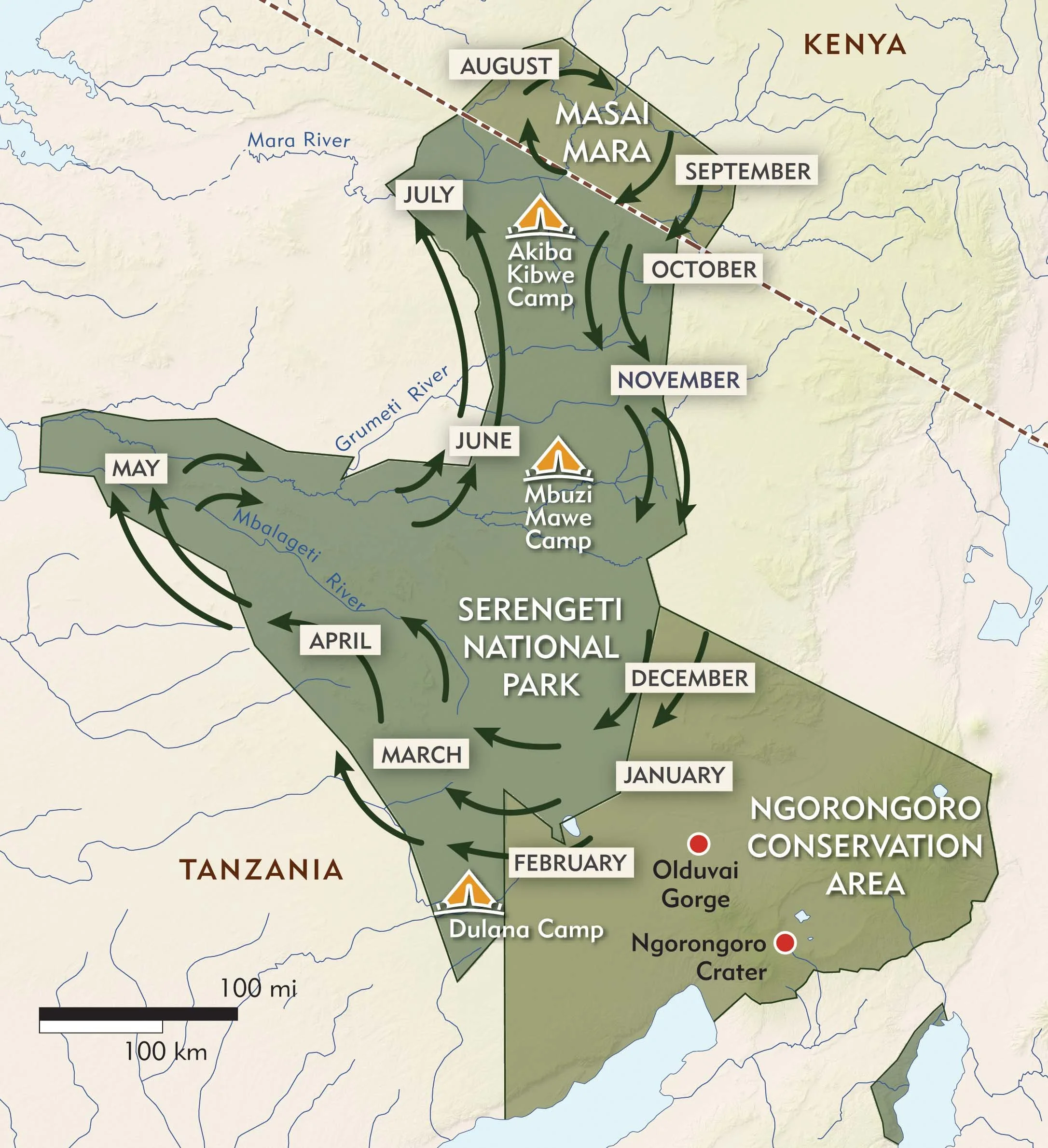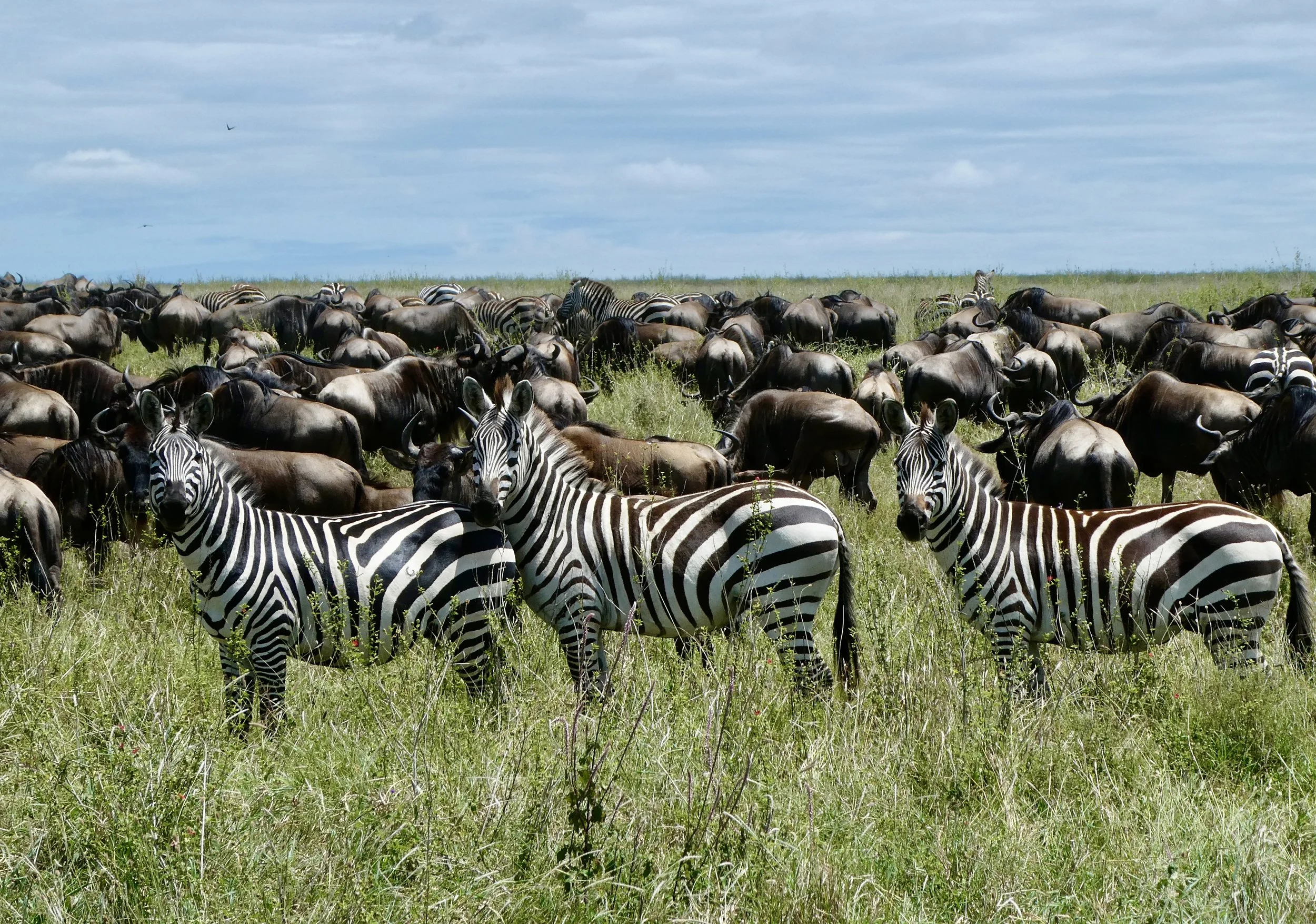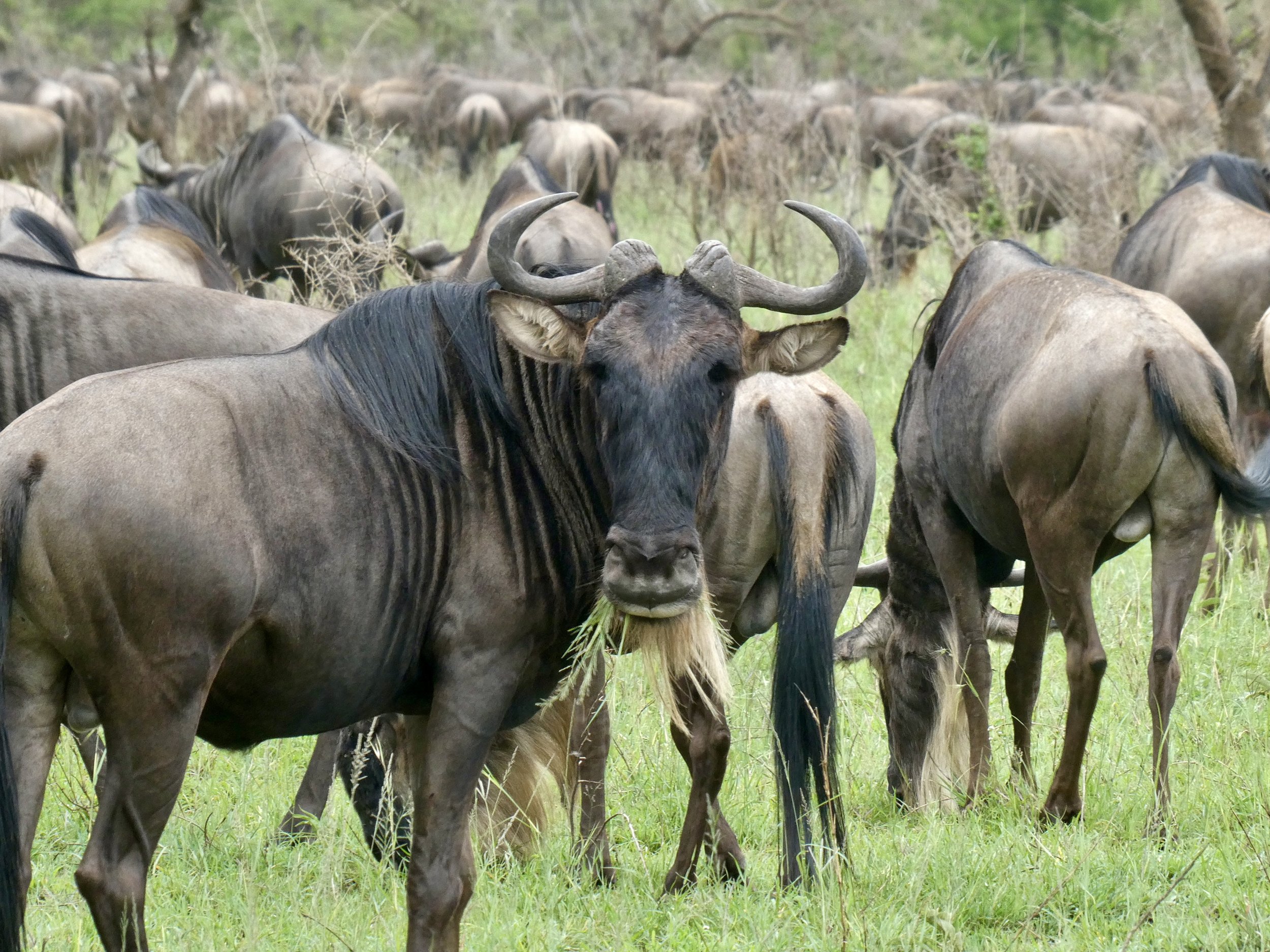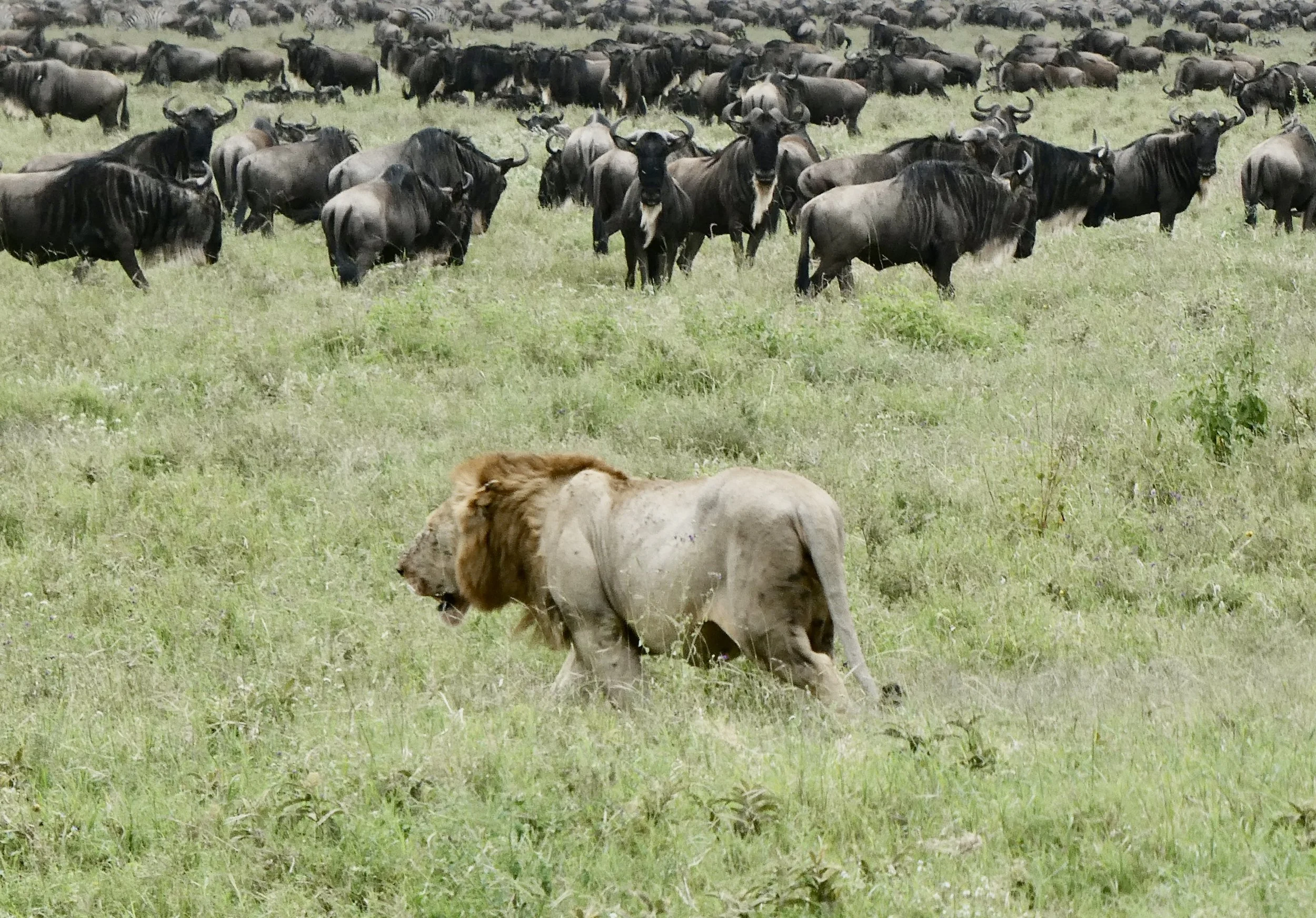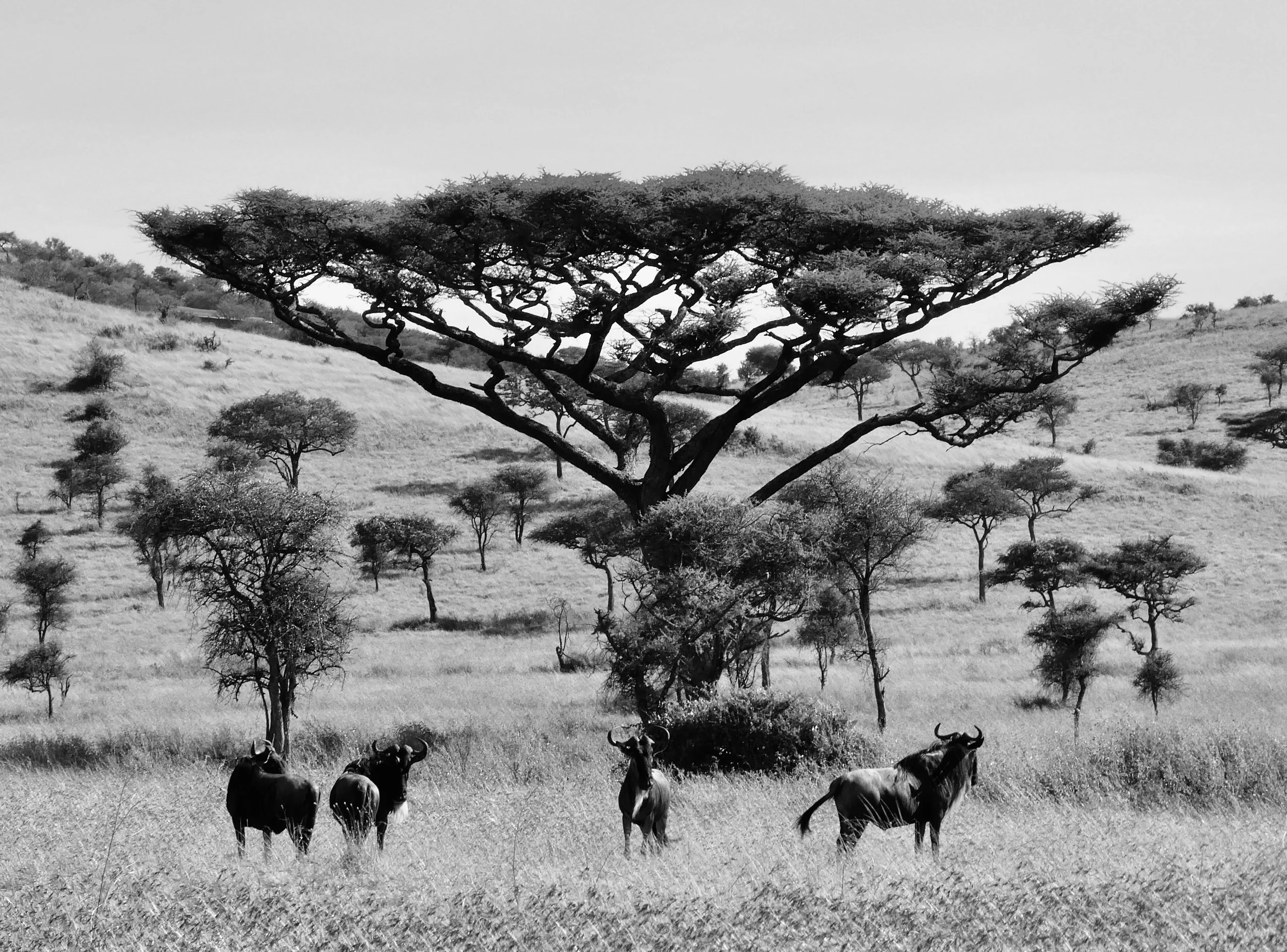The Great Migration,
also known as The Wildebeest Migration, is one of the most remarkable wildlife events in the world. Each year, approximately 1.5 million Wildebeest (along with hundreds of thousands of Zebras and other animals) undertake a migratory journey across the Serengeti in Tanzania and the Maasai Mara in Kenya. This 1,800 mile journey is dangerous, especially for the 400,000 new calves born each year.
Can you imagine looking out as far as you can see and realizing you are witness to this incredible event. It’s April and the Wildebeest calves (only 5 months old) are playfully running within the herd. The journey ahead will be particularly dangerous for them. Many are still nursing.
Zebras are an important part of the migration.
As you scan the herd, you see groups of zebras amoungest all the wildebeest. When these two species migrate together, they benefit from each other's strengths. Zebras can spot predators from a distance, while wildebeests can detect threats through sound and scent. This combined vigilance creates a more effective early warning system, enhancing the overall safety of the herd.
The Serengeti
is renowned for its diverse and abundant predators, including lions, cheetahs, leopards, hyenas, and wild dogs. These carnivores play a crucial role in maintaining the balance of the food web, preying on animals like wildebeest, zebras, and antelopes.
Preditor vs Prey
This wildebeest loses its battle against the ultimate predator - a lioness. Hiding in the tall grasses close to the herd, the lionesses strikes swiftly and chokes the wildebeest into to submission
The scavengers
will complete the circle of the food chain. They will devour all that’s left after the lionesses pride has had its full.

